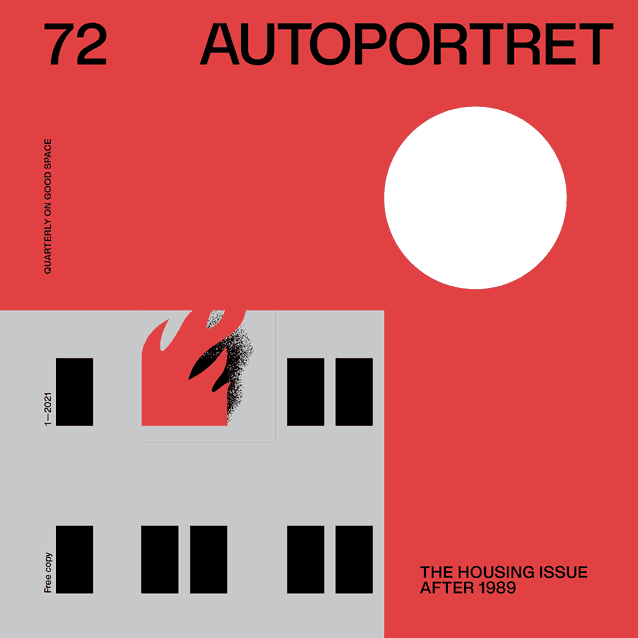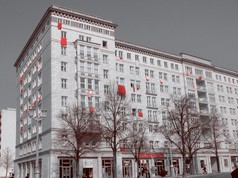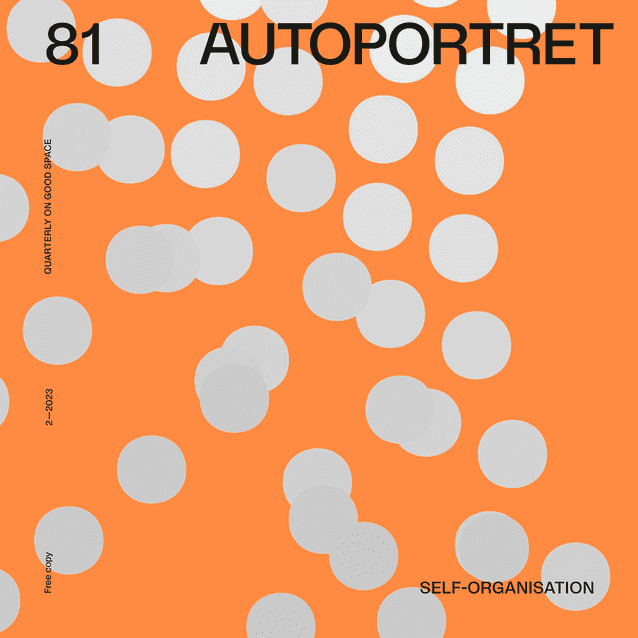Rent cap
“Socialism made in Germany”1, “assault on our economic order”2, “GDR-like politics”3 – these are just some of the negative monikers for the law that limits the rates of flats for rent in Berlin,4 commonly known as the Mietendeckel (the rent cap). In an atmosphere of scandal, the law was passed on 30 January 2020 by the Berlin Senate, ruled by the coalition of the Social Democratic Party of Germany, Alliance 90/the Greens, and the Left. The first part of the law came into force on 23 February last year and resulted in freezing the amount of rent at the level it was at the time; the second part, which took effect on 23 November, determines the maximum rent for the property – calculated on the basis of the year of construction, amenities, and location. The Berlin Senate estimates that thanks to the new regulation, rent will be reduced for three hundred and forty thousand apartments.5 The compliance of this act with the constitution has been questioned by members of legal and political circles alike, as they see it as violating private property protection and hindering the operation of the free market.
Quite recently, only a dozen or so years ago, Berlin was famous for cheap apartments for rent. In this respect, it stood out not just from among the other European metropolises, but also other large West German cities – Munich or Hamburg. Why, then, was it necessary to resort to such radical measures? In this article, I will present significant political, economic and urban developments and phenomena that have led to the current situation in the Berlin housing market. According to estimates for March 2020, the German capital is short of one hundred and forty-five thousand apartments.6
An apartment for rent
In order to understand the background to the creation of the Berlin rent cap law, it is necessary to explain the specificity of the housing market in the Federal Republic of Germany and its history in the divided Berlin. Germany has a long history of rental housing. According to statistics from 2019, every second German resident lives in a rented apartment. Compared to other European countries, Germany is second only to Switzerland in terms of the lowest number of people who own the apartments they live in.7 This solution was made possible by the extensive system, existing until recently, of subsidizing rental housing by the state �– both social housing, and housing intended for the middle class with their higher earnings. The rental of flats is managed by housing cooperatives, also acting as developers. In West Berlin, they operated as joint stock companies, and their shares still belong to the city. Thanks to this form of housing support, the supply of apartments was maintained at a high level, and at the same time the prices on the real estate market were stable.
The tradition of the state supporting the construction of apartments for rent dates back to the Weimar Republic, when the right to housing was written into the constitution. The modern housing estates created at that time were intended to provide healthy living conditions for people of various social status, and meant a counterbalance to “the world’s largest city of tenement houses”, as Berlin used to be called in the Gründerzeit era. As land was scarce and expensive in the city centre, housing estates grew mainly in the erstwhile suburbs. Construction was carried out by state-subsidized housing cooperatives. Six of these estates have been inscribed in the UNESCO World Heritage List. They deserved this distinction for their pioneering character for those times, including amenities that met modern hygiene standards. Furthermore, the cooperative movement was included on the list of intangible cultural heritage. Significantly, to this day only two of the modernist estates – the garden city of Falkenberg and Schillerpark in the Wedding district (both designed by Bruno Taut) – are still managed by housing cooperatives.8 Flats in the remaining housing estates were sold several times over, and eventually ended up in the hands of large-scale, profit-oriented development companies or private individuals.
An apartment in the divided Berlin
After World War II, providing shelter to all citizens and housing policy became a fundamental element of the Cold War competition between the two German states, and the divided Berlin played a special role in this rivalry.9 In terms of housing construction, both parts of the city relied on public subsidies: the eastern districts due to the nature of the GDR’s political system and the capital-city importance; whereas West Berlin as the “window display of the West”, cut off from the rest of the state, would be too risky a market for investors without the financial support of the state.10
The first major undertaking in the “housing battle” was the construction of a socialist realist housing estate on Karl-Marx-Allee (then called Stalin-Allee). West Berlin responded first with the Ernst-Reuters estate in Wedding (which was ceremoniously inaugurated in the presence of President Theodor Heuss), and then with Hansaviertel, the housing estate that originated as an international architectural exhibition.11
After rejecting the doctrine of socialist realism, which was dubbed a national tradition in the GDR, modern housing estates in East Berlin began to spring up both in the suburbs and in the city centre. Construction activities intensified following the announcement, in 1971, of the “Resolving the Housing Problem” by 1990, as one of the flagship policy promises of Erich Honecker’s government. It was then that the large housing estates of Hellersdorf, Marzahn and Hohenschönhausen were built, with three hundred and thirty thousand apartments.12 Contrary to popular belief about the GDR, slightly more than half of the population lived not in apartment blocks, but in buildings erected in the first half of the twentieth century, and much more new architecture was created in West Germany after the war.13
The inhabitants of nineteenth-century tenement houses were in a particularly difficult position. The architecture of their homes, identified with the capitalist past, was not being renovated apart from a few examples of revitalization projects (Arnimplatz, Arkonaplatz); therefore, it was gradually decaying.14 Any renovation investments were made impossible by the artificially maintained level of rents, throughout East Germany, at the level they were in 1936. Despite the nationalization of the land, 41 per cent of the flats still remained in private hands. Since the low rent made it impossible not only to earn money on rent, but also to carry out any renovation works, landlords often relinquished their properties to the state. Statistics show that East Germans lived in much worse conditions than West Germans. In 1989, 99 per cent of western flats had a shower or a bath, and 98 per cent had a toilet; in the east, these figures were 80 per cent and 73 per cent, respectively.15.
In West Berlin, the main goal of housing policy has been the renewal of former working class quarters. The “first city revitalization program”, announced in 1963 by Willy Brandt, Berlin’s mayor at the time, consisted in the massive demolition of nineteenth-century tenement houses and the erection of modern buildings in their place. The displaced tenants were offered new apartments in the Markisches Viertel, Gropiusstadt, or Falkenhangener Feld projects, which were built on the then outskirts of the city. The protests of residents in Kreuzberg and Wedding as well as a reorientation in the perception of historicist architecture led in the 1970s to a modification of the planning course, and shifted the focus to the modernization of tenement houses and their surroundings. An important condition for these changes, known as “careful revitalization” (behutsame Stadterneuerung), was the inclusion of townhouses’ tenants in the redevelopment planning process and keeping rents at a level that would allow them to return to their old apartments after those had been renovated.16
Both the implementation of revitalization projects in the city centre and the construction of new housing estates in the suburbs were carried out – with enormous financial support from public funds – by cooperatives of pre-war origins, including DEGEWO and GESOBAU. They also dealt with housing management: rental, repairs, and administration. Some of the units built at that time were developed as social housing; subsidies and cheap loans for their construction were granted on the condition that rents would be kept at a constant level. Andrej Holm writes that, contrary to the “legend” about the social nature of the flats then created, the purpose of the subsidy was not to provide long-term housing for the most needy, but to build owner-occupied flats while making real estate developers richer. The state’s financial support lasted fifteen years, with an option to extend it for another fifteen. After paying off the low interest loan, the owner of the apartments – in this case a real estate developer – was no longer compelled to keep the rent low and was able to set prices according to the free market.17
The above model of financing the construction of social housing by the state led to a situation in which low rents and the status of social housing survived longest in those housing estates that were built last – namely the blocks of flats on the outskirts of the city. As a result, the poorest people clustered there, and so these projects became ghettoized.18
In West Germany, the fees in rented flats were kept low after the war by central planning. This practice was gradually abandoned in the 1960s, due to the saturation of the market with apartments following the period of reconstruction after the war damage. Back in the 1950s, both the middle class and the lowest-income households spent the same proportion of their income on housing; in the 1960s it was the poorest who paid proportionally the most.19 Since the 1970s, West Germany had been undergoing deregulation of the housing market and privatization, and this trend intensified after 1989.20
Living together
After the GDR was incorporated into the Federal Republic of Germany, both parts of Berlin found themselves in a completely new political and economic situation, devoid of the former status of competing centres. The decision to transfer the German capital from Bonn to Berlin in 1991 gave hope to the united city. Therefore, a rapid population growth was expected and it was from this angle that the housing policy was initially pursued. Lucrative tax benefits were meant to be an incentive for investors. Until 1996, those who built new facilities, and until 1998, those who modernized the existing ones were eligible to apply.21 It was mainly the buyers of flats for rent, well-earning Germans from the West, who benefited from the new regulations; they treated investment in real estate market as an opportunity to reduce their income taxes.
A major challenge for the unified city was the restitution of properties seized in East Berlin. Applications for restitutions could be filed also by those who lost their homes earlier, after 1933. In the districts of Prenzlauer Berg and Mitte, 70 per cent of the buildings were returned to the previous owners or their descendants. Many of them, overwhelmed by the enormity of necessary renovation investments, resold the recovered property to development companies. Most of the long-term rental houses in the eastern districts, which had not been modernized, were in a deplorable condition. Soon after reunification, the city launched a program for revitalizing tenement houses. They attempted to implement it under the slogan of “careful revitalization” like the one used in West Berlin. Due to the reduction of direct subsidies and to restitution, despite the tenant protection program, the process of replacement of residents began. Even during the revitalization process, they began to move out of tenement houses and were often unable to afford the new, higher rent in the renovated apartments.22
In addition to the revitalization of downtown districts, the modernization of tower block estates was also carried out, which differed in standard from their West German counterparts. Large investments in new housing construction were made in the 1990s, mainly in the new suburbs of Berlin (Buch, Karow, Alt-Glienicke, and Rummelsburger Bucht), i.e. areas that had been earmarked for development even before 1989. In the city centre, however, a policy had been introduced of condensing the existing building substance with facilities for “new urbanites” – well-earning employees of global companies that opened their offices in Berlin.
From unification until 1995, seventy-one thousand new flats were built with the city’s support.23 Despite these investments, the population of Berlin began to decline after 1994.24 In the mid-1990s, Senator for Construction and Housing, Wolfgang Nagel, pointed to the need for a change in the city’s housing policy founded on extensive subsidies: “In Berlin, we have reached the financial limits of our possibilities in this regard. We even exceeded them.”25 Subsidized social housing, programs to revitalize old buildings in West Berlin even before reunification, combined with the revitalization of tenement houses and the modernization of apartment blocks in the eastern districts have pushed the city into enormous debt.26 Besides, any further support for housing construction was unnecessary, as in 1996 the housing stock increased by 6.4 per cent, with the outflow of residents at 2 per cent.27
Hence, the situation on the housing market was stable in the first years after reunification. The high percentage of flats belonging to municipal cooperatives, new construction investments, subsidies for the revitalization of tenement houses in the eastern part of the city, and a smaller than expected population growth all contributed to the fact that in 2002 the number of vacant flats for rent was around one hundred and twenty thousand.28
An apartment for sale
From the mid-1990s, the capital of Germany took the course towards liberalisation of the housing market, and enabled its progressive privatization. The former model, in which housing construction was carried out by private enterprises using state subsidies and cheap loans, had been gradually abandoned in West Germany since the 1980s, following the scandal related to the misappropriation of public money by the Neue Heimat real estate development company.29 Due to the widening gap in the city’s budget, Berlin politicians wanted to reduce debts at all costs. This strategy was part of the New Public Management trend, which proposed the reform of municipal public institutions, aimed at making them similar to free market enterprises in terms of their functioning. This concept was characterized by the drive to streamline administration as well as debt reduction through privatization – also in the housing sector. Therefore, the city sold building plots and real estate belonging to municipal enterprises on a mass scale.
The scale of the land sale phenomenon is illustrated by the exhibition 1989–2019: Politik des Raums im neuen Berlin (1989–2019: Spatial policy in new Berlin) at the Neuer Berliner Kunstverein, organized in 2019. In her work Kartografie der Privatisierung (Cartography of privatization), Florine Schüschke calculated that twenty-one square kilometres of land in Berlin had been privatized since the unification, which is the equivalent of the entire district of Friedrichshain. After 1989, Berlin sold more than half of its land that was fit for development; no other German city had disposed of so much land at that time. Plots of land were sold to the highest bidder, therefore the investors who wished to capitalise on that, built luxury real estate rather than flats for the average Berliners. As noted by Schüschke, the income from the sale of land did not contribute to a lasting reduction of Berlin’s debt; furthermore, it deprived the city of strategic land management policy.30
Apart from building plots, municipal flats were privatized. East German housing co-operatives and private landlords, already in debt before 1989, could count on debt reduction under the Altschuldenhilfe Act, on the condition that they would sell 15 per cent of their resources. The act provided for flats to be purchased directly by the tenants, but in the entire East Germany, only 20 per cent of flats sold in this way ended up in the hands of their occupants; in Berlin the figure was only 5–6 per cent. A total of 277,000 apartments in the former East Germany – including 46,000 in the eastern part of Berlin – were privatized at that time.31 The sale of council flats also covered West Berlin. In the early 1990s, the city owned 480,000 municipal flats, whereas in 2009 – it was down to only 260,000.32
In search of an apartment
From 2007 on, the population of Berlin began to grow again, and so did prices in the housing market.33 In the years 2009–2017, the city experienced an average increase of forty-five thousand inhabitants per year. Local politicians seemed to hope that the real estate market would be able to respond to the growing demand for apartments on its own, but this did not happen. The insufficient number of flats on the market also affected rental prices – they grew at a dizzying pace. The residents of Berlin began to split into those with the old lease agreements, and those with the new ones, as each re-letting of the apartment allows the owner to increase the rent. Currently, those who wish to rent an apartment have to pay much more than those who have been renting for years. People of limited financial means often restore to looking for a place on the outskirts of the city. For incumbent Berliners, “luxury renovations” present a big problem. The owners of tenement houses carry out modernization (for example, they add balconies and install elevators), and the costs – usually high – can later be incorporated in the rent. Legally, the city can prevent this type of investment from happening – among others, thanks to the Milieuschutz (community protection) program, which covers the areas threatened with gentrification. The goal is to protect the tenants against moving out; investors are required to get approval for all renovation works from the city planning office.
Another strategy is the extremely costly repurchase of former council housing by the city. In 2019 and 2020, two spectacular actions were taken to buy out apartments that had been sold after the reunification of Berlin. They were carried out by the city-owned Gewobag cooperative. Nearly six thousand flats in the districts of Spandau and Reinickendorf were purchased from the Luxembourg-based Ado Properties corporation for nine hundred and seventy million euros. These units had been built in West Berlin in 1960–1990 as part of the municipal housing construction program, and were sold in 2004.34 In November 2019, six hundred and seventy apartments were purchased from Predac Immobilien Management AG, after the protests of the residents of Karl-Marx-Allee who feared rent increases by Deutsche Wohnen, a company with a bad reputation that expressed interest in taking over these flats.35 In January 2020, the purchase of another one hundred and fifty-one units was announced.36 To date, the amount that Gewobag paid for the apartments in Karl-Marx-Allee, with the support from the city, has not been made public.
In February 2021, a campaign began to collect signatures as part of a citizens’ initiative to propose new legislation, aimed at expropriating Deutsche Wohnen and other real estate development companies. The operation is possible under section 15 of the constitution, and it assumes the payment of compensation by the state.37 The mayor of Berlin, Michael Müller, has already announced that he would not support this initiative.38
The “rent cap” initially seemed to be a controversial, albeit, in its assumptions, essentially correct method of protecting the social order. However, already in the first months of its effective operation, it turned out that the new law affected not only big companies speculating with real estate. Housing cooperatives were prevented from carrying out the necessary renovation works in the existing facilities and from building new ones. It also placed in a difficult situation those private owners of single rental apartments who treated them as an additional source of income, for example to supplement a low retirement pension.
The fate of the “rent cap” will depend on the judgment of the Constitutional Tribunal in 2021. If it proves to be unconstitutional, landlords will be able to claim retroactive rent payments. Many tenants are already putting aside the money they saved on the rent, because they do not believe that the law will stand. Regardless of what the Tribunal decides, the rent limitation law is unlikely to provide a lasting solution to the housing problem in Berlin, because, as its critics emphasize, it has not contributed to a single new apartment being built in the city.39
Income, How to Avoid Risk. Thanks to rising rents, buying apartments for rent became both a lucrative business and a way to secure one’s future financial stability (photo by: Małgorzata Popiołek-Roßkamp)
The history of the housing crisis in Berlin is a story of missed opportunities, myopic decision-making, and the inability to draw conclusions from the experiences of other cities. Berlin had a chance to remain a unique metropolis where everyone, regardless of the content of their wallet, was able to find a place for themselves. Maybe that is what Berlin’s problem is – like many other cities before it, it fell victim to its own popularity.










